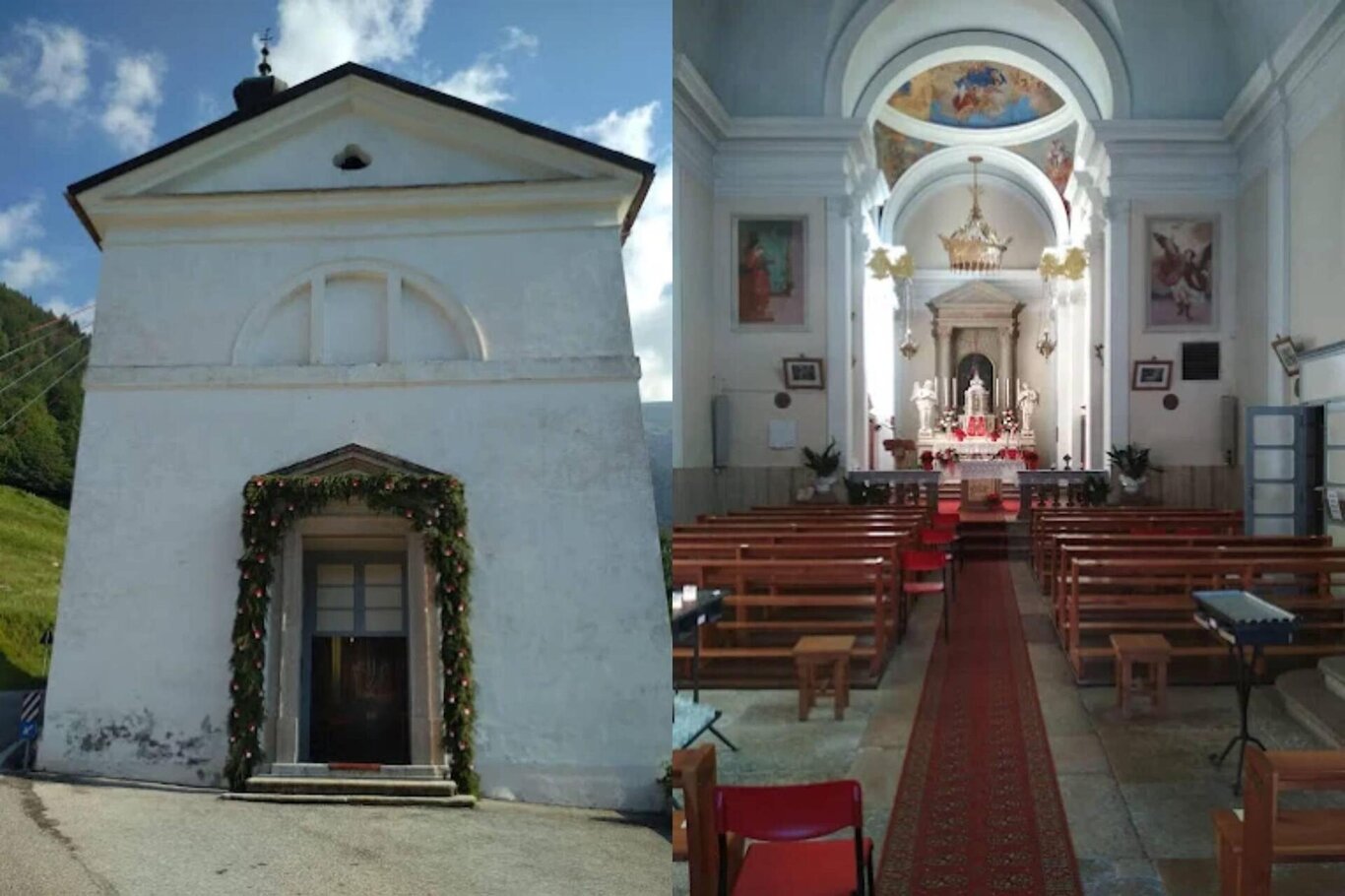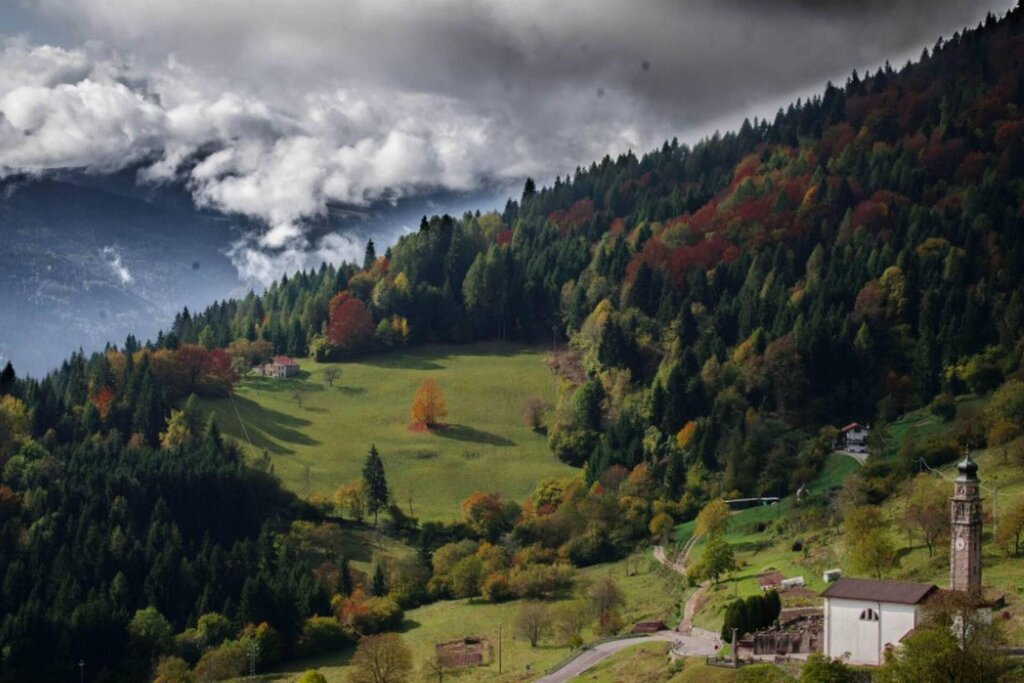Existing since the second half of the 13th century, the first description of the building is given to us by Bishop Rovellio during his pastoral visit on July 3, 1585: the presbytery, vaulted and frescoed, contained the table by Marescalchi, while the small nave was paved with wooden planks. On the side was the masonry bell tower, about 15 meters high.
On the tympanum of the men's door (left side) is carved the date 1633 interrupted by the monogram of Christ. This is the primary testimony of the 17th-century enlargement that affected the choir, the nave, and the two side altars.
Around 1720, due to the increase in population, the hall was lengthened by relocating the altars, erecting the orchestra, and building the current dome of the presbytery.
At the end of the work, in 1734, the church was consecrated by Bishop Suarez. The final arrangement of the nave, with the creation of the current ceiling, was completed in the following century, likely designed by the local Feltrino Giuseppe Segusini. It was then reconsecrated by Bishop Renier in 1857.
The 16th-century bell tower was reconstructed between 1721 and 1745, as evidenced by the dates inscribed respectively at the base and at the top of the construction, based on a project by the local architect Antonio Schio. It is constructed of local stone in plain view: for this occasion, a quarry was opened above Aune. In the 19th century, the bell chamber was raised and the roof was replaced with the current onion shape. The clock was installed in 1864. Today the bell tower stands 37 meters tall.
The interior, with a single nave and two side altars in addition to the main one, features a massive classical cornice that runs along the walls supported by pilasters.
Behind the 19th-century presbytery decoration is the altarpiece by Feltrino Pietro de' Marescalchi (1522-1589), framed by two Corinthian pilasters.
It is a valuable oil on panel depicting the Madonna with Child between Saints Peter the Apostle and Saint Lawrence the Martyr, dated to the fifth decade of the 16th century and restored in 1989. The work, in terms of influences, arrangement, and color use, fully belongs to the Venetian Mannerism of the era.
From the 17th-18th century are the wooden stalls and the two praying angels, while the royal crown in gilded wood (19th century) hangs from the ceiling.
The overlying dome was frescoed, but later repainted, by an unknown Feltrino artist towards the end of the 18th century with the Assumption of Mary at the center and in the spandrels Moses, Elijah, Saint Paul the Apostle, and Saint John the Baptist.


